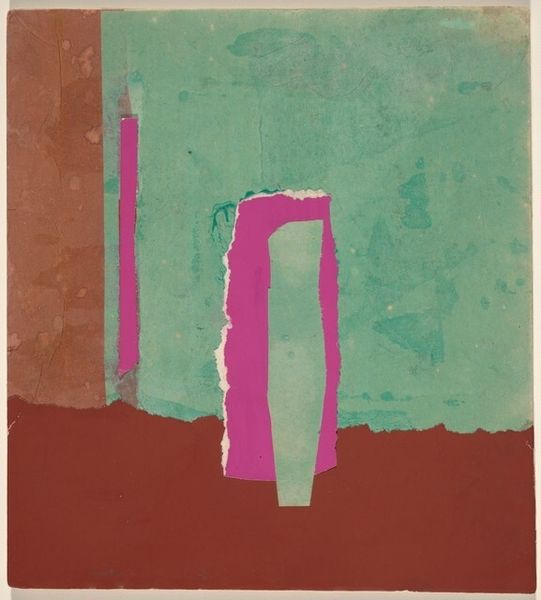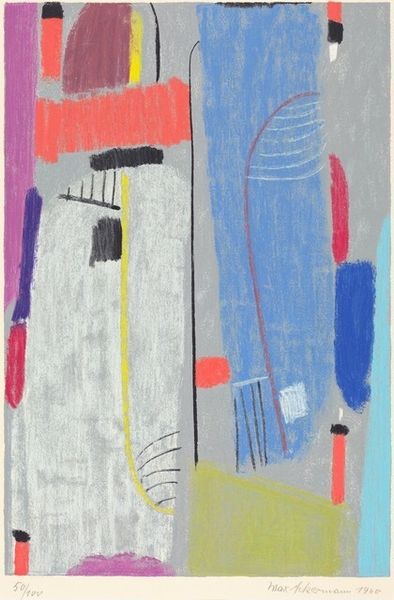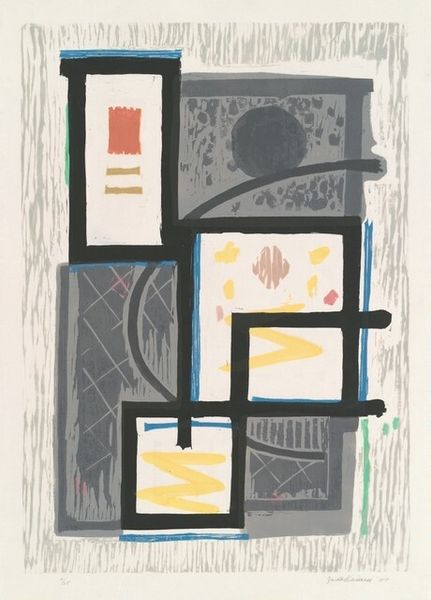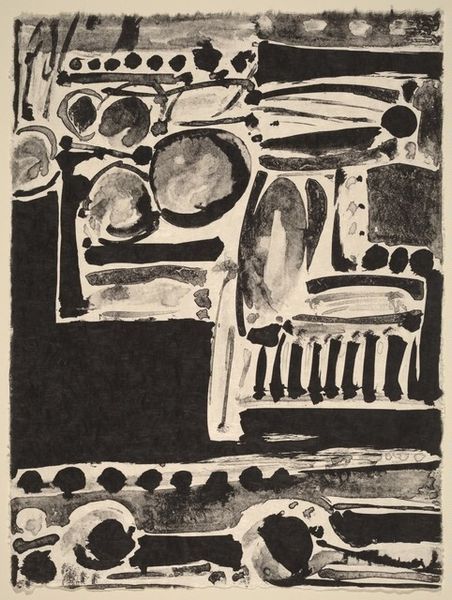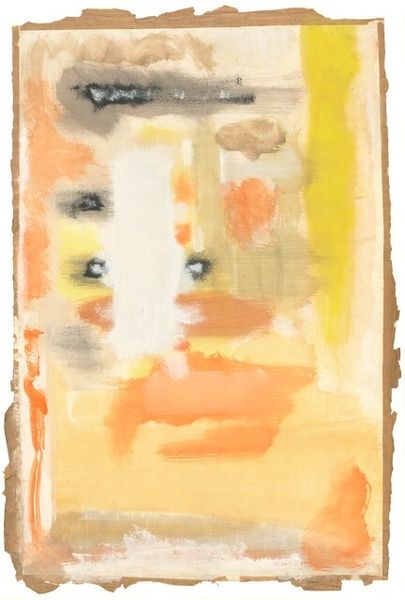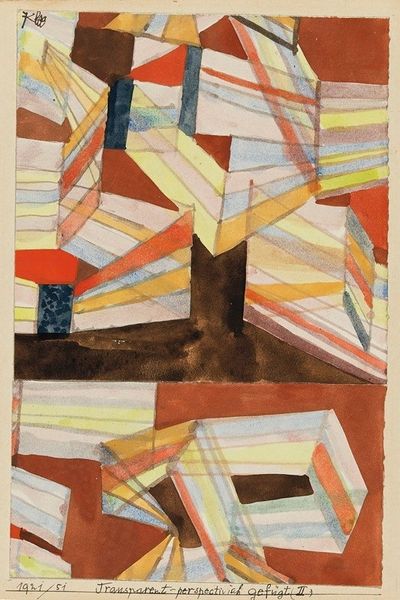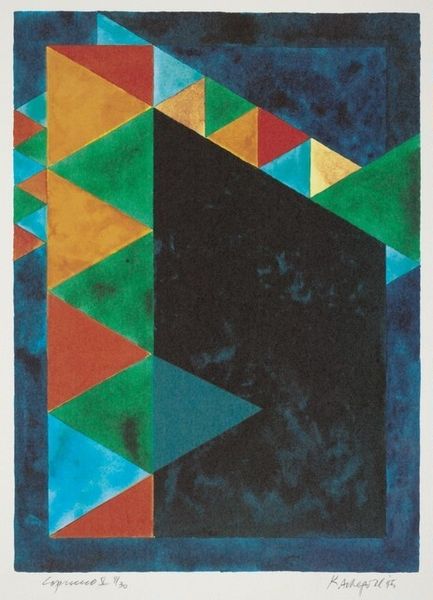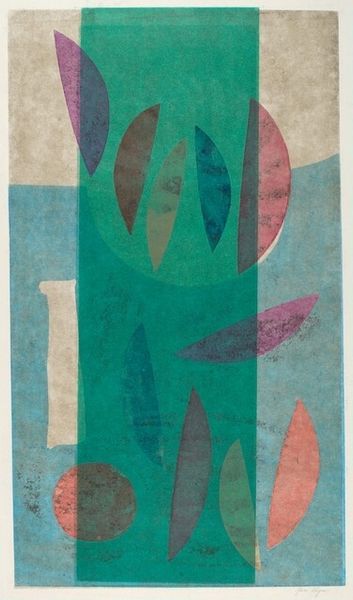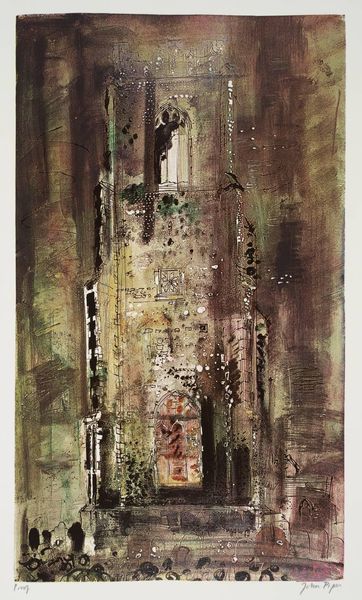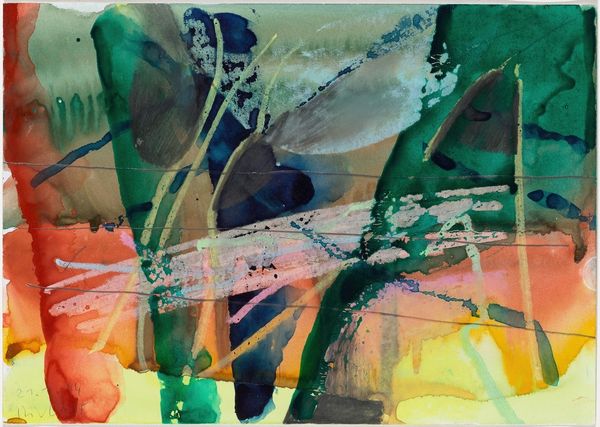
drawing, painting
#
drawing
#
painting
#
figuration
#
abstraction
Dimensions: sheet: 23.81 × 15.56 cm (9 3/8 × 6 1/8 in.)
Copyright: National Gallery of Art: CC0 1.0
Editor: Here we have Mark Rothko’s "Untitled (interior with figure)," created around 1936-1937. The use of color and simplified forms gives it a rather dreamlike quality, almost like a memory fading at the edges. What catches your eye most in this piece? Curator: What interests me is understanding how Rothko, prior to his abstract expressionist works, engaged with the figure within a specific social and political context. This was during the Depression era. How does the flattened space and limited palette speak to the lived realities of that time? Is this interior a refuge, or a representation of constrained circumstances? Editor: That's fascinating. I hadn't considered the Depression's influence. Do you see a particular narrative being presented? Curator: It’s not so much about a clear narrative as it is about the suggestion of atmosphere. The figure, seemingly gazing outward, is set against these vertical bands which may read as window panes or perhaps bars. This composition might hint at themes of confinement and societal observation, common anxieties of the time, particularly when reflecting on the role of art as either escapism or a mirror to society. Editor: The 'window or bars' idea makes me think about the artist's own position, reflecting society but also perhaps feeling separate from it. Curator: Precisely. And it sets the stage for his later abstractions, where the societal concerns are felt rather than seen. Before he abandoned figuration altogether, he used these ambiguous spaces and figures to address collective anxieties in a subtly critical way. Where do you think he stands politically at this point of his career? Editor: Now, I see the piece as more complex – the dreamlike quality clashes with the reality of his sociopolitical milieu. The figure appears less as a wistful person but an observer of something happening elsewhere. It’s also making me reflect on how the role of figurative art shifts in times of great social change, perhaps losing favor compared to abstraction that provides an artist more freedom of interpretation and political standing. Curator: Absolutely, a point well-made. Thank you! Editor: Thank you for illuminating its historical dimension.
Comments
No comments
Be the first to comment and join the conversation on the ultimate creative platform.
